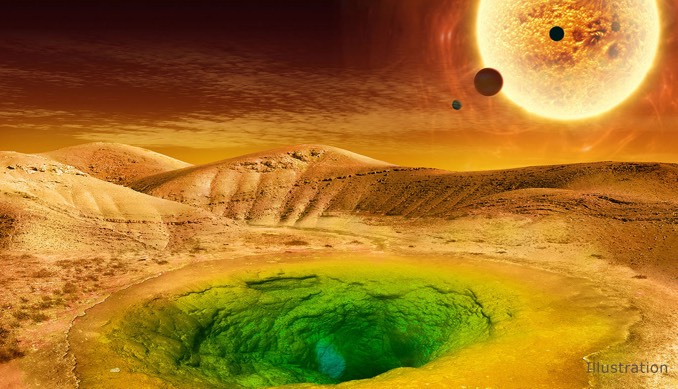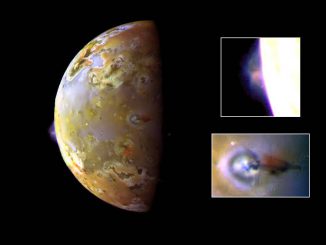
Given the enormous distances involved, sending astronauts or robotic probes to worlds orbiting other stars to search for signs of life is not an option. Instead, astronomers using ever-more sensitive telescopes and instruments are refining plans to search for tell-tale chemicals in exoplanet atmospheres, seasonal changes and other biosignatures that might indicate a living world.
“We’re moving from theorising about life elsewhere in our galaxy to a robust science that will eventually give us the answer we seek to that profound question: Are we alone?” Martin Still, an exoplanet scientist at NASA Headquarters in Washington, said in a statement.
But it will not be easy.
Finding an exoplanet biosignature like oxygen, produced on Earth by photosynthesis, for example, is not a sure-fire indicator of life because other, non-biological sources are chemically possible. So how can astronomers make sure their interpretation of exoplanet data is scientifically valid?
NASA’s Nexus for Exoplanet System Science, or NExSS, plans to address that very question. In five papers published last week in the journal Astrobiology, NExSS researchers presented an assessment of the most promising biosignatures and what is needed to properly interpret them if found on other worlds.
A major concern is making sure a living world can be distinguished from one that isn’t even though it meets at least some of the criteria. In other words, how to avoid being fooled by nature.
“What does a living planet look like?” asks Mary Parenteau, an astrobiologist at NASA’s Ames Research Center and lead author of one of the new papers. “We have to be open to the possibility that life may arise in many contexts in a galaxy with so many diverse worlds – perhaps with purple-coloured life instead of the familiar green-dominated life forms on Earth, for example. That’s why we are considering a broad range of biosignatures.”
Oxygen remains one of the most promising signs of biological activity, but it’s not enough on its own to make the case.
“On early Earth, we wouldn’t be able to see oxygen, despite abundant life,” said Victoria Meadows, an astronomer at the University of Washington in Seattle and another lead author. “Oxygen teaches us that seeing, or not seeing, a single biosignature is insufficient evidence for or against life. Overall context matters.”
The NExSS researchers are developing a framework to quantify how likely it is that a planet supports life by using multiple threads of evidence and traits, including biosignatures and even the behaviour of the planet’s host star.
“We won’t have a ‘yes’ or ‘no’ answer to finding life elsewhere,” said Shawn Domagal-Goldman, an astrobiologist at NASA’s Goddard Space Flight Center in Greenbelt, Maryland. “What we will have is a high level of confidence that a planet appears alive for reasons that can only be explained by the presence of life.”
Edward Schwieterman, a postdoctoral researcher at the University of California-Riverside’s Department of Earth Science, is lead author of the first paper in the series appearing in Astrobiology. He reviewed three types of biosignatures that will play key roles in determining the presence of life:
– Gaseous biosignatures such as oxygen that can be detected in the atmosphere
– Surface biosignatures that affect the absorption and reflection of light on the surface
– Temporal biosignatures indicating seasonal changes
“The search for life using biosignatures is not as simple as looking for a single molecule or compound,” Schwieterman said. “Atmospheric oxygen, for example, could be a sign of life, but there are many nonbiological ways that oxygen gas could be produced on an exoplanet.
“Conversely, it is possible that life could exist in the absence of oxygen gas, similar to early life on Earth or portions of the oceans today. This is one reason temporal biosignatures, which are based on dynamic phenomena such as atmospheric seasonality, might be more robust biosignatures in some circumstances.”
The second paper in the Astrobiology series discusses how nature can mislead researchers, the third and fourth propose ways to identify biosignatures on planets that are radically different from Earth while the final paper discusses observational techniques.
“These articles will provide an entry point for people from disparate fields interested in how they too might contribute to the search for life outside our solar system,” Schwieterman said.



